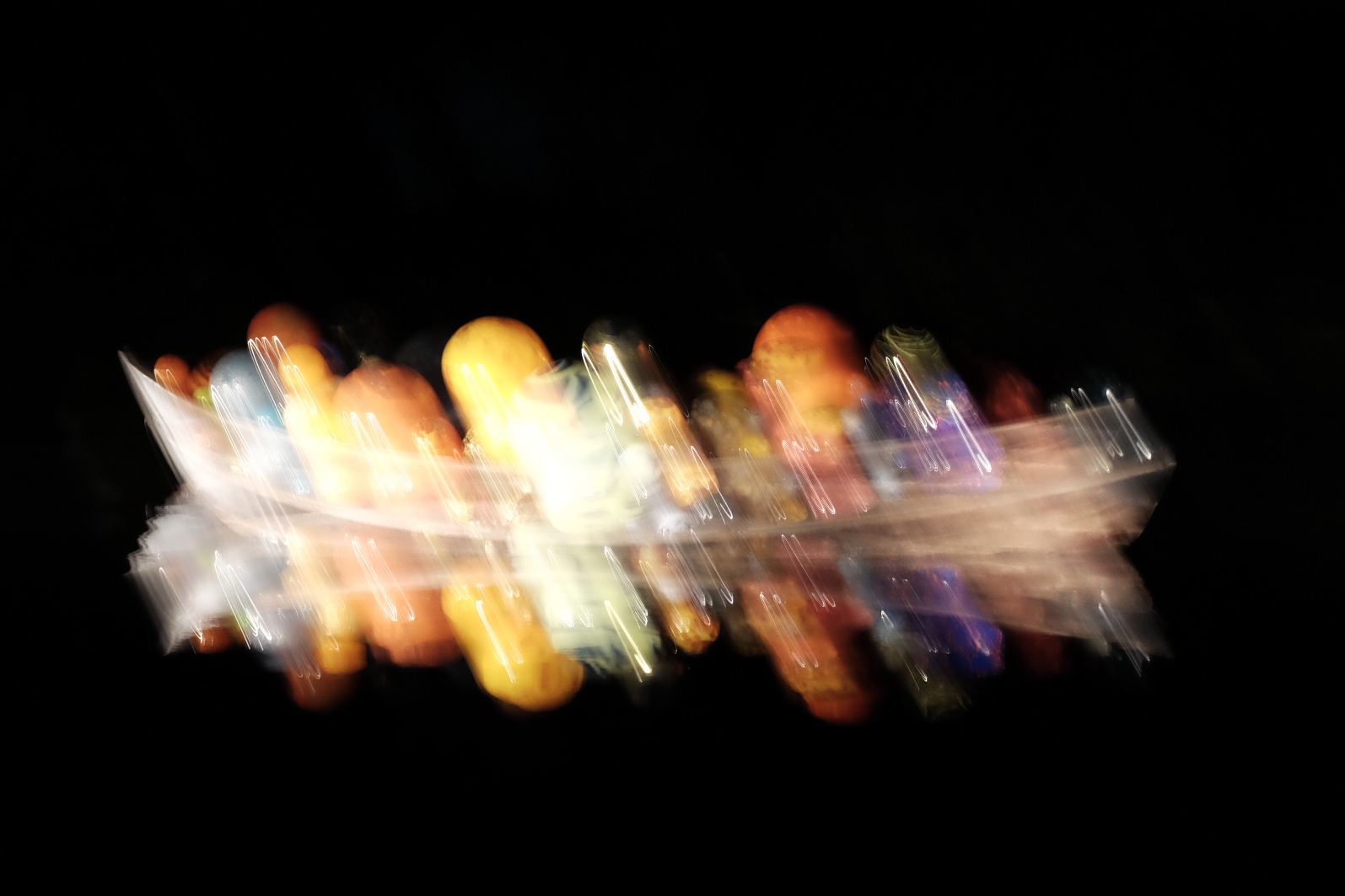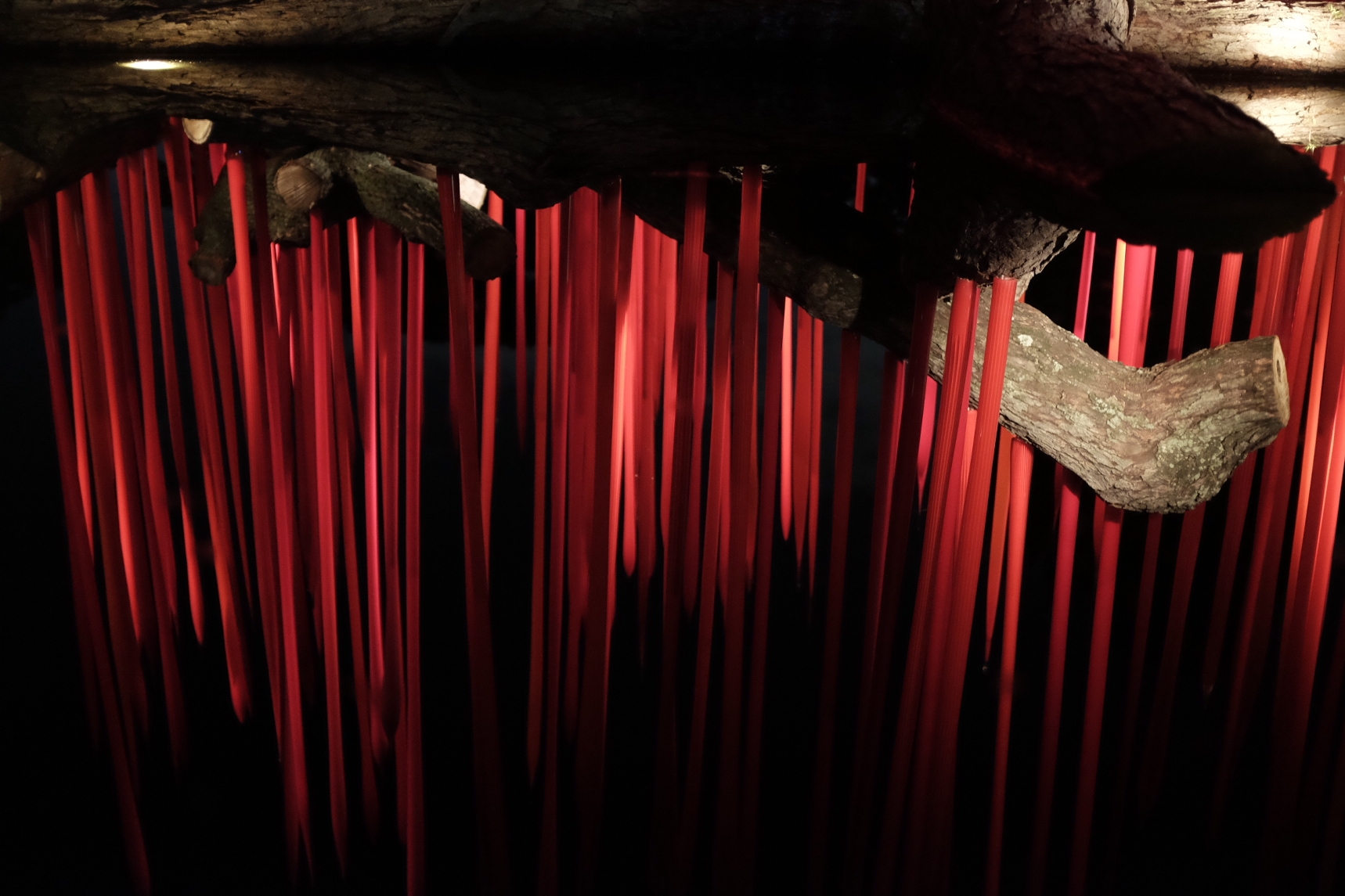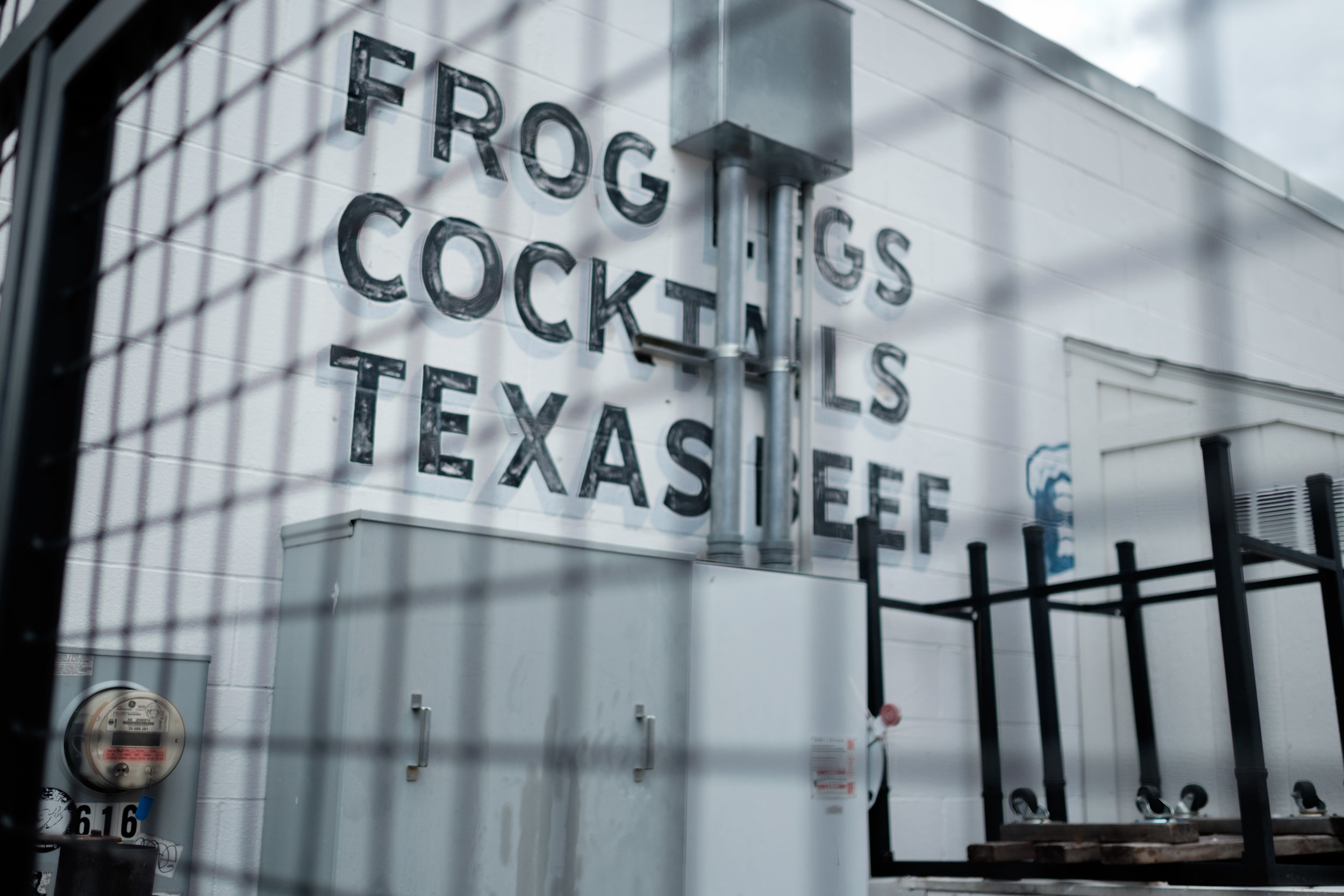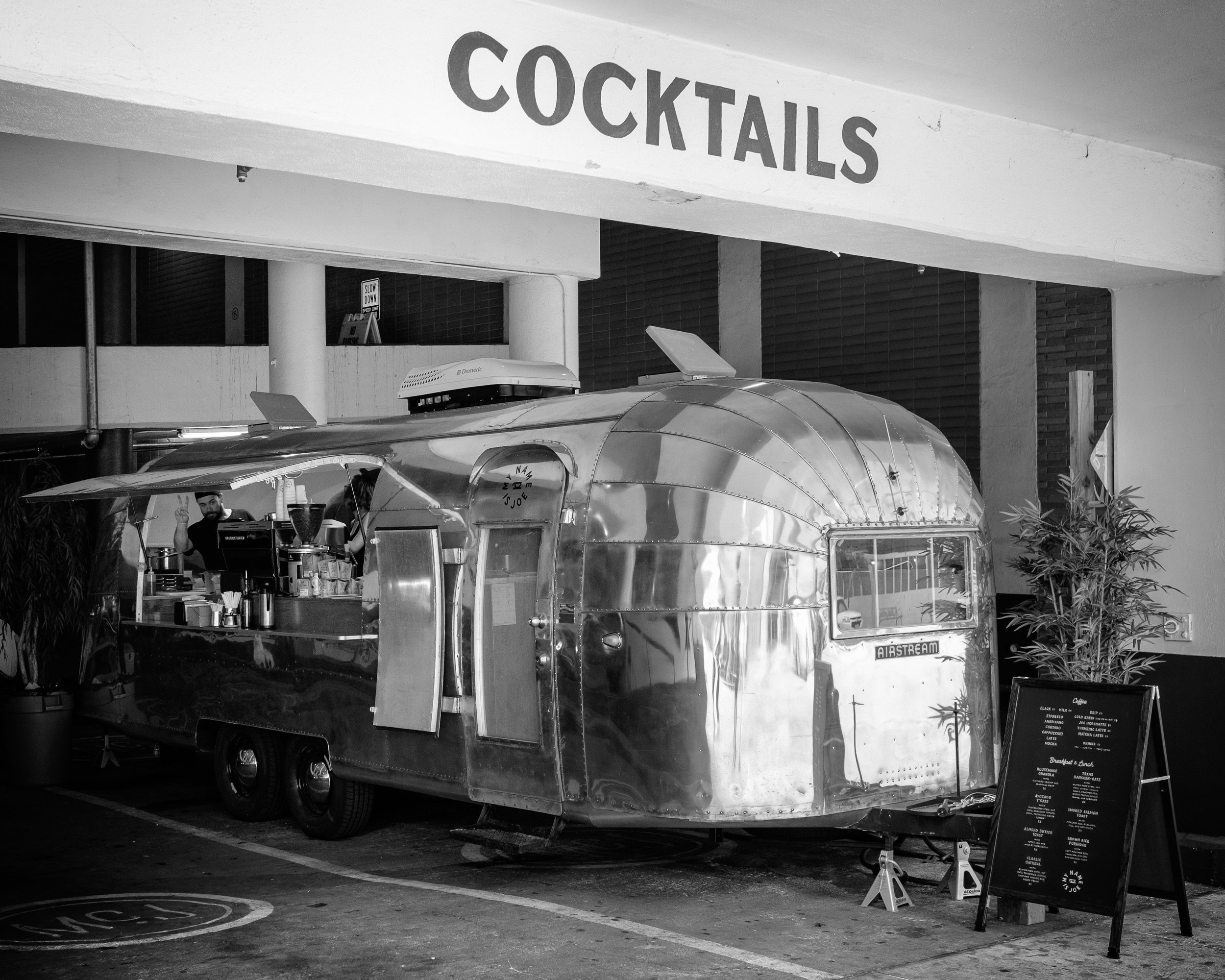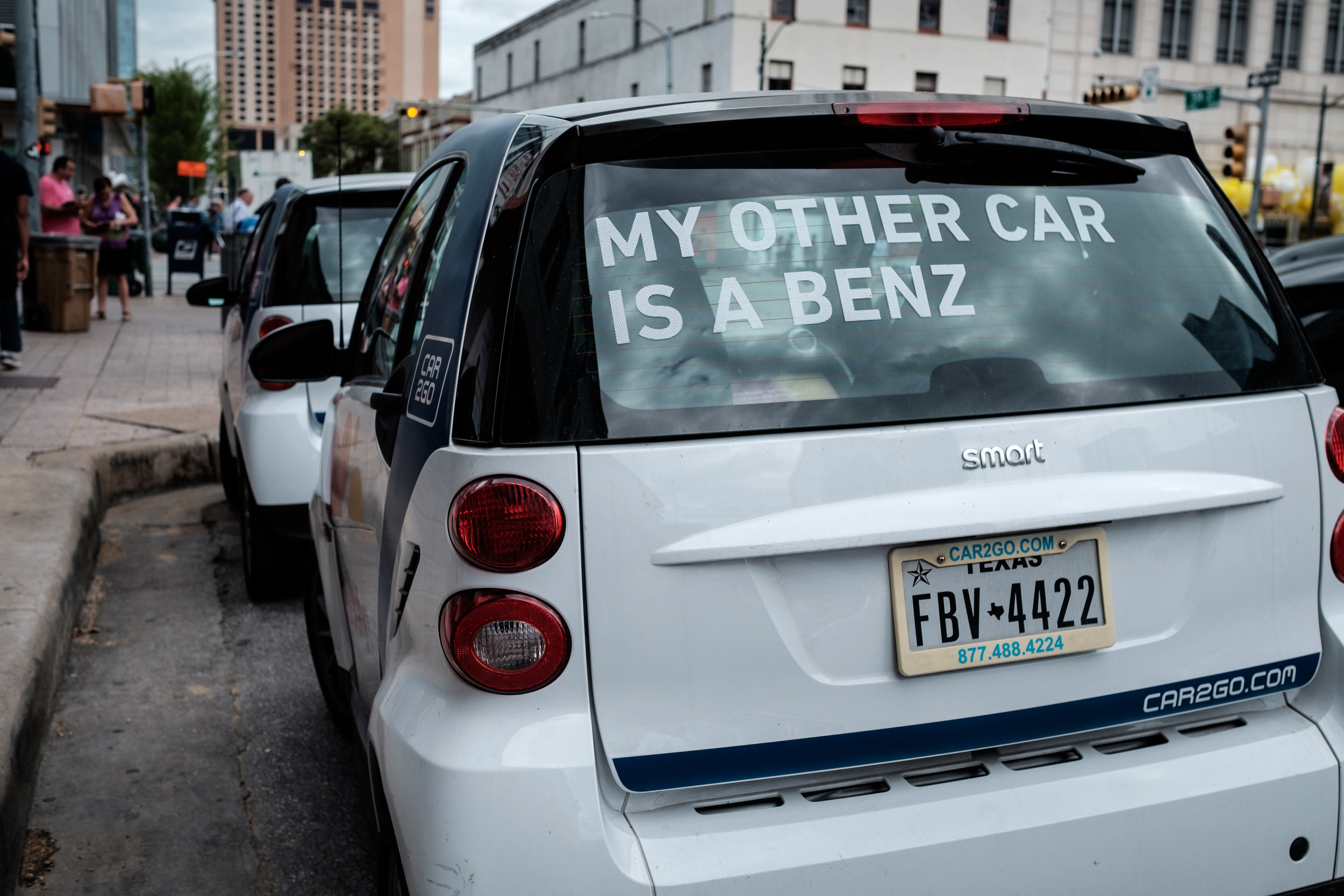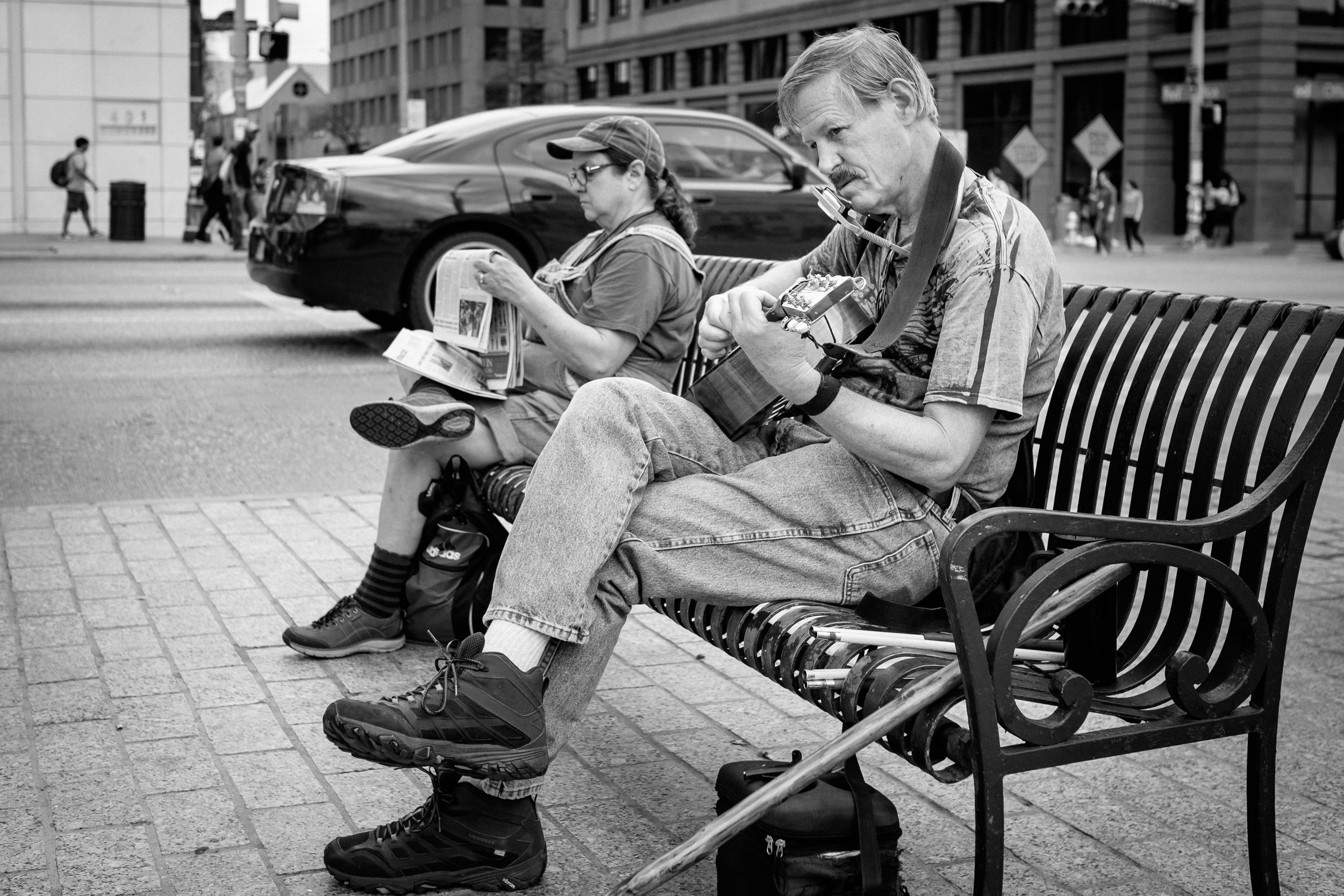When I began doing street portraits, I tried to study how different photographers approach their subjects. I learned from Brandon Stanton of Humans of New York who has spoken extensively about his approach, the importance of developing trust, and how to work with a subject to tell their story. From David duChemin I learned how to cross lines of difference with humility and respect. How to close both physical and emotional distance to create space to help people open up.
But 'learning' these ideas in abstract is just one step - applying them in my own context, my identity, and personality requires disciplined practice, reflection, and ongoing improvement.
A moment of solitude
When I approached this man sitting near Columbus Circle, he looked simultaneously serene but also conflicted. His music offered one way to block out the crowd but I sensed he had other thoughts swirling in his mind.
I've borrowed HONY's strategy for approaching strangers by asking simply, "can I take your photograph?" No pretext about a project or interest, but just a desire to connect. From a first photo or two, I'll then ask a few questions. Also borrowing from the HONY method, I skip the small talk. This is really hard for me - asking strangers to share vulnerable moments, hopes, challenges, is not something that comes naturally. But there's no way around this. While many people have said 'no' to my initial question, almost no one has declined to share once we get going. Being a stranger helps. They have a chance to open up and talk without concern for consequence and the connection that creates is powerful.
If I'm being totally frank, I think my camera and neck-strap actually help a lot. They are items of interest - tools of the trade that signal more than a passing interest. Yes, there are many significantly more talented photographers who can work with just an iPhone. No, you don't need a fancy camera or craft neck-strap. But from my own experience, they create a small amount of trust that I take what I do seriously. I'll often actually get questions about my camera - is it film, who makes it, do I like it, why did I choose it? While these questions have nothing to actually do with my approach to photography, they help create a connection with the people that I photograph. I'll take it.
Opening up
As we continued talking, he shared a deeply personal and honest story. As it unfolded, he seemed relieved to have a chance to share it. It was that moment of relief, honesty, a touch of timidity, that I tried to capture in this second image.
In the end, there's something revealing about that first image too. It speaks of a man with a need to get a way - who has lived much of his life hidden behind a facade. But personally I like the second one better - it speaks of the connection we had in that moment. Fleeting, earnest, sad, but still hopeful.
This is my process and it continues to evolve.




